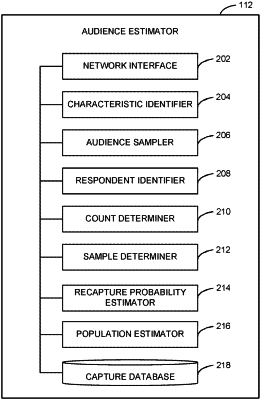| CPC H04N 21/44222 (2013.01) [G06Q 30/0201 (2013.01); H04N 21/25883 (2013.01)] | 20 Claims |

|
1. An audience population estimation computing system comprising:
at least one processor configured to, upon execution of instructions stored in memory, cause performance of;
obtaining an audience sample, the audience sample indicating, for each of a plurality of respondents, a respondent identifier and one or more characteristics, the one or more characteristics indicative of at least one of a website visit or a media impression by the respondent;
identifying ones of the plurality of respondents in the audience sample that are associated with a particular characteristic corresponding to an audience population subset;
determining a sample count by counting a quantity of the identified ones of the plurality of respondents;
making a comparison between the respondent identifiers of the identified ones of the plurality of respondents and stored respondent identifiers for respondents associated with the particular characteristic in one or more additional audience samples;
determining, based on the comparison, a unique sample increment count based on the comparison by counting a quantity of the identified ones of the plurality of respondents having respondent identifiers unique from the stored respondent identifiers;
incrementing a unique sample count by the unique sample increment count; and
estimating a size of the audience population subset based on the sample count, the unique sample count, and a seed population estimate.
|